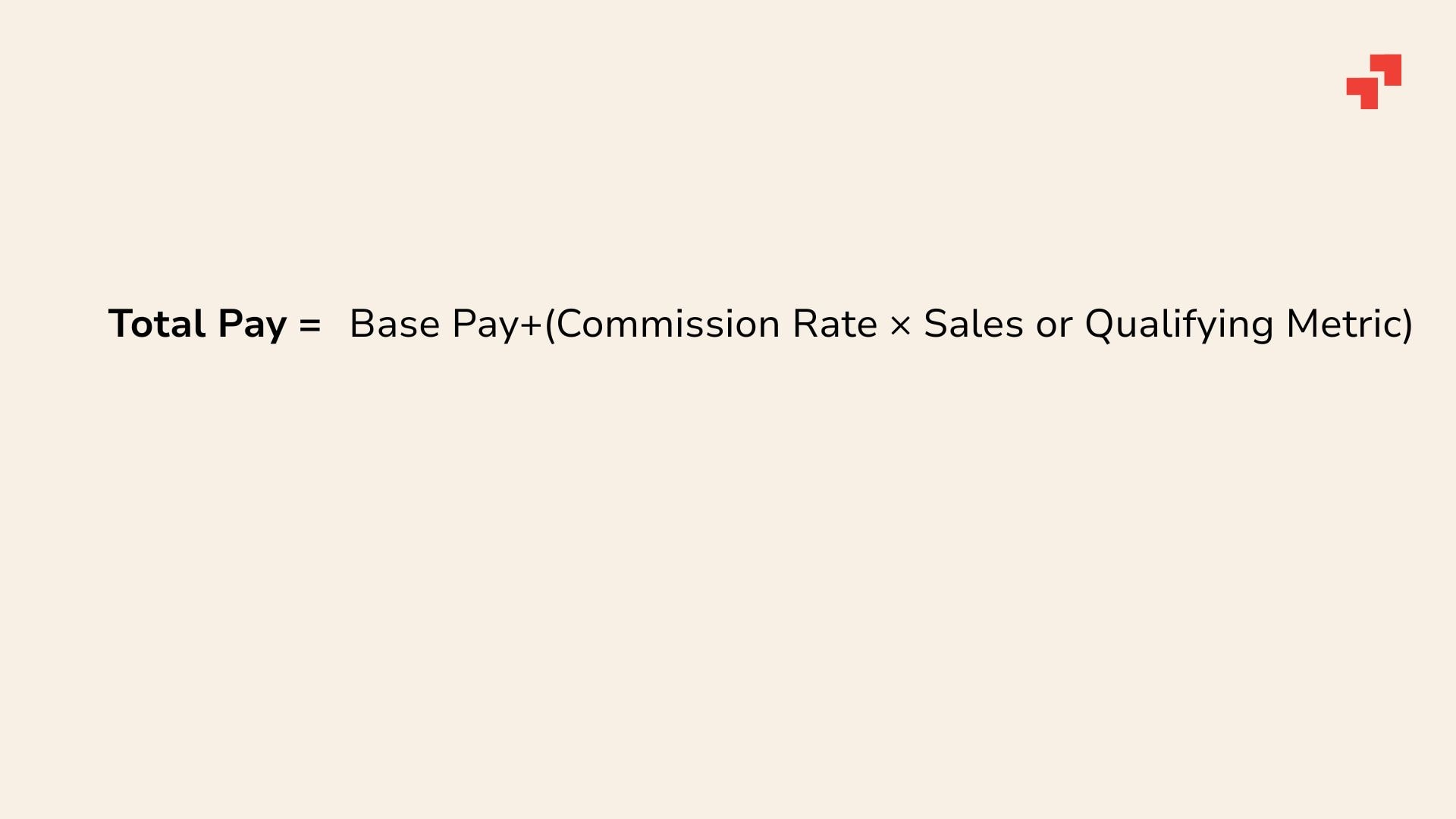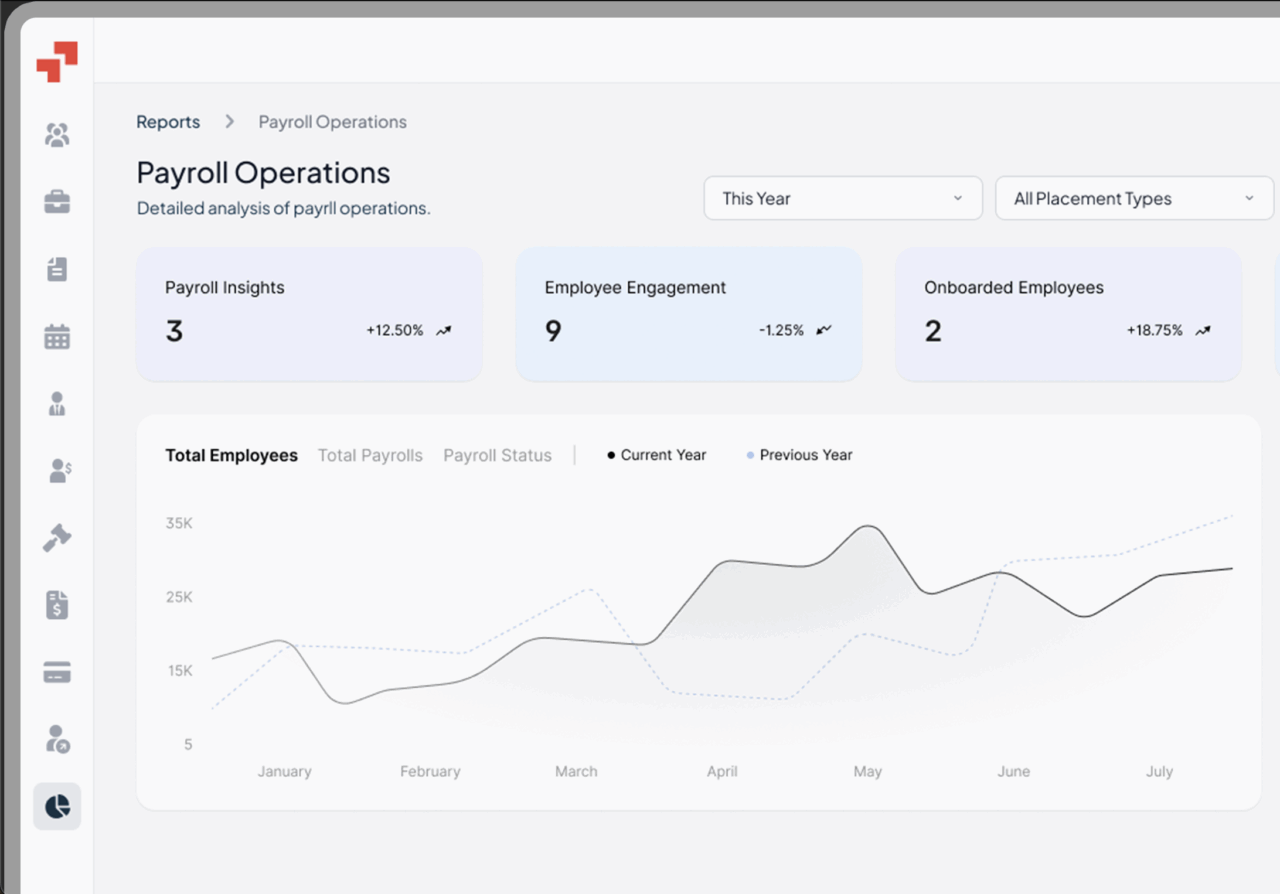Global Workforce GlossaryCommission Pay
Related Terms
Floating Holiday
Tax Identification Number
W2 Employee
Holiday Pay
Form I-9
What is commission pay?
Commission pay is compensation awarded based on measurable business outcomes, such as sales revenue, deals closed, or client acquisitions, using a commission-based approach.
Unlike fixed salaries, this pay structure aligns employee earnings with company performance, incentivizing productivity while enabling flexible cost management and differing from traditional compensation models.
Eligibility for commission pay often depends on how the employee’s role is defined within the organization. It can be standalone or supplementary to base pay. Different compensation plans and commission structures are designed to fit various business needs.
Table of Contents
- What is commission pay?
- How does commission pay work?
- Who receives commission pay?
- What are the types of commission pay?
- How can you calculate commission pay?
- How does commission pay differ from hourly pay?
- What are the benefits of commission pay for employees?
- What are the benefits of commission pay for employers?
- What are the disadvantages of commission pay?
- Example: Commission Pay in Action
- FAQ
How does commission pay work?
Commission pay operates on predefined metrics, often calculated using a commission rate or commission percentage. Employees earn a percentage or fixed amount per sale or performance milestone, with commission rates and the commission structure determining the amount.
Structures vary, straight commission, base-plus-commission, or tiered incentives. Payments are typically calculated and disbursed monthly or quarterly, following a clear payment schedule and defined pay period for commission disbursement, integrating seamlessly with payroll systems while tracking expected commissions and ensuring timely paying of commissions.
Who receives commission pay?
Primarily sales personnel, sales teams, sales reps, sales professionals, account managers, brokers, and client-facing roles receive commission pay. It may also extend to marketing or business development staff tied to revenue outcomes, as well as commission-based employees many employees in sales departments are paid this way.
Eligibility is usually contractually defined, ensuring clear expectations and compliance with labor laws across regions.
Motivating and managing the sales team through effective commission structures is essential for driving performance and achieving business goals.
What are the types of commission pay?
Commission pay structures are designed to incentivise sales performance and can take several forms.
Common types include:
Straight commission: 100% performance-based, often using a fixed percentage of sales.
- Motivates high performers but introduces income variability and risk.
- Example: A car salesperson earns 10% of every car sold. Selling $40,000 worth of cars in a month results in $4,000 commission.
Base plus commission: Fixed salary plus incentives.
- Provides financial stability while still incentivising high performance.
- Example: An insurance agent receives a $3,000 base salary plus 5% of all policies sold. Selling $20,000 in policies earns $1,000 in commission, for a total pay of $4,000.
Variable commission: Rates fluctuate based on sales performance or thresholds.
- Encourages employees to exceed targets by offering higher rewards for higher performance.
- Example: A software sales rep earns 5% for sales up to $50,000, but 8% for sales above $50,000. Selling $60,000 yields $2,500 + $800 = $3,300 commission.
Commission salary: A compensation model combining a base salary with commission-based earnings.
- Offers predictability with an upside potential linked to performance.
- Example: A real estate agent earns a $2,500 monthly salary plus 3% of all property sales. Selling $100,000 in property results in $3,000 commission, for a total of $5,500.
Tiered commission: Higher percentages after surpassing targets.
- Motivates employees to reach higher levels of performance by rewarding incremental achievements.
- Example: An account executive earns 5% on the first $50,000 of sales, 7% on the next $50,000, and 10% beyond $100,000. Selling $120,000 earns $8,000 commission.
Residual commission: Ongoing revenue from prior sales.
- Encourages long-term client relationships and recurring revenue growth.
- Example: A SaaS account manager earns 5% monthly on subscription renewals. A $10,000 subscription renewal each month generates $500 monthly commission.
Choice depends on company strategy, risk tolerance, and talent retention goals. Commission-based earnings are typically structured with clear guidelines on base pay, commission rates, and performance metrics, and are managed to align employee motivation with company objectives.
How can you calculate commission pay?
Calculate by multiplying the agreed-upon rate by the qualifying metric, such as applying the commission percentage to the total sales or number of sales.
Formula:

| Sales Range | Commission Rate | Commission Earned Calculation |
|---|---|---|
| $0 – $50,000 | 5% | $50,000 × 5% = $2,500 |
| $50,001 – $100,000 | 7% | ($Sales – $50,000) × 7% |
| Above $100,000 | 10% | ($Sales – $100,000) × 10% |
Step-by-Step Calculation:
- Identify total sales or qualifying metric.
- Apply the commission rate (or tiered rates) to calculate commission earned.
- Add commission to the employee’s base pay.
- Use automated payroll systems for accuracy and compliance.
Example:
- Base Pay: $3,000
- Total Sales: $60,000
- Commission:
- First $50,000 → 5% = $2,500
- Remaining $10,000 → 7% = $700
- Total Commission = $2,500 + $700 = $3,200
- Total Pay = $3,000 + $3,200 = $6,200
How does commission pay differ from hourly pay?
Hourly pay provides fixed income based on hours worked, serving as a base income that offers financial security and stability but less performance incentive.
Commission pay ties compensation directly to results, motivating high performers while introducing income variability.
Employers can balance risk by combining base pay with commission for predictability and to provide financial stability for employees.
What are the benefits of commission pay for employees?
Employees can significantly increase earnings, earning extra income by rewarding high performance and efficiency.
Commission models motivate proactive behavior, career growth, and alignment with company objectives by encouraging employees to reach their on target earnings.
In regions with strong labor protections, transparent commission structures also reinforce trust and legal compliance.
Commission pay is often directly tied to the value of services sold, further incentivizing employees to maximize their sales efforts.
What are the benefits of commission pay for employers?
Employers benefit from a pay-for-performance model that directly drives revenue, fuels company growth, and generates more sales.
Costs are variable and scalable, reducing fixed payroll overhead while allowing pay to be aligned with business needs.
Commission structures attract ambitious talent, support new business development, improve retention, and can accelerate market penetration when aligned with strategic targets.
Designing effective pay structures is essential to motivate employees and achieve organizational goals.
What are the disadvantages of commission pay?
Downsides include income instability for employees, as market conditions can significantly impact earnings, potential focus on short-term gains over long-term client relationships, and disputes over calculation transparency.
Poorly designed plans may encourage unethical behavior, neglect of customer satisfaction, harm to business relationships, misalignment with company culture, or legal exposure if wage laws are overlooked and earnings do not meet minimum wage requirements.
Example: Commission Pay in Action
A US-based SaaS startup aims to scale its sales in Europe.
They implement a tiered commission plan for account executives: 5% on initial $50,000 ARR, 7% on $50,001–$100,000, and 10% beyond $100,000.
Each month, sales are logged in an integrated payroll system to automatically calculate commission in USD for a given period, such as monthly or quarterly.
For an account executive closing $120,000 in ARR:
- $50,000 × 5% = $2,500
- $50,000 × 7% = $3,500
- $20,000 × 10% = $2,000
- Total commission = $8,000
Commission-based pay is also common in car dealerships and for real estate agents, where income is often tied directly to property sales completed within a given period.
This incentivises high performance, scales costs with revenue, and ensures cross-border compliance without creating manual payroll errors. Employees are motivated, leadership monitors growth efficiently, and financial planning remains predictable.
Different sales cycles can influence which commission structure is most effective, with shorter cycles often favoring straight commission and longer cycles benefiting from a base plus commission model.
FAQ’s
What are the best practices for commission pay?
Best practices include defining clear metrics, setting specific sales goals and sales targets, maintaining transparent calculation methods ideally using payroll tools for accuracy, regularly reviewing thresholds, combining with base salary when appropriate, and ensuring compliance with regional labor laws.
It is also essential to ensure employees are properly compensated and to pay commissions according to documented terms. Communication and performance tracking tools are critical to avoid disputes and drive motivation.
What is a typical commission rate?
Typical commission rates vary depending on the industry and role, but they generally range from 5% to 20% of sales or revenue generated.
What is a good commission percentage?
A good commission percentage balances motivating employees and maintaining business profitability. Generally, 5% to 15% is considered effective, depending on sales complexity, effort required, and company strategy.
Hire the Best Talent, Anywhere






